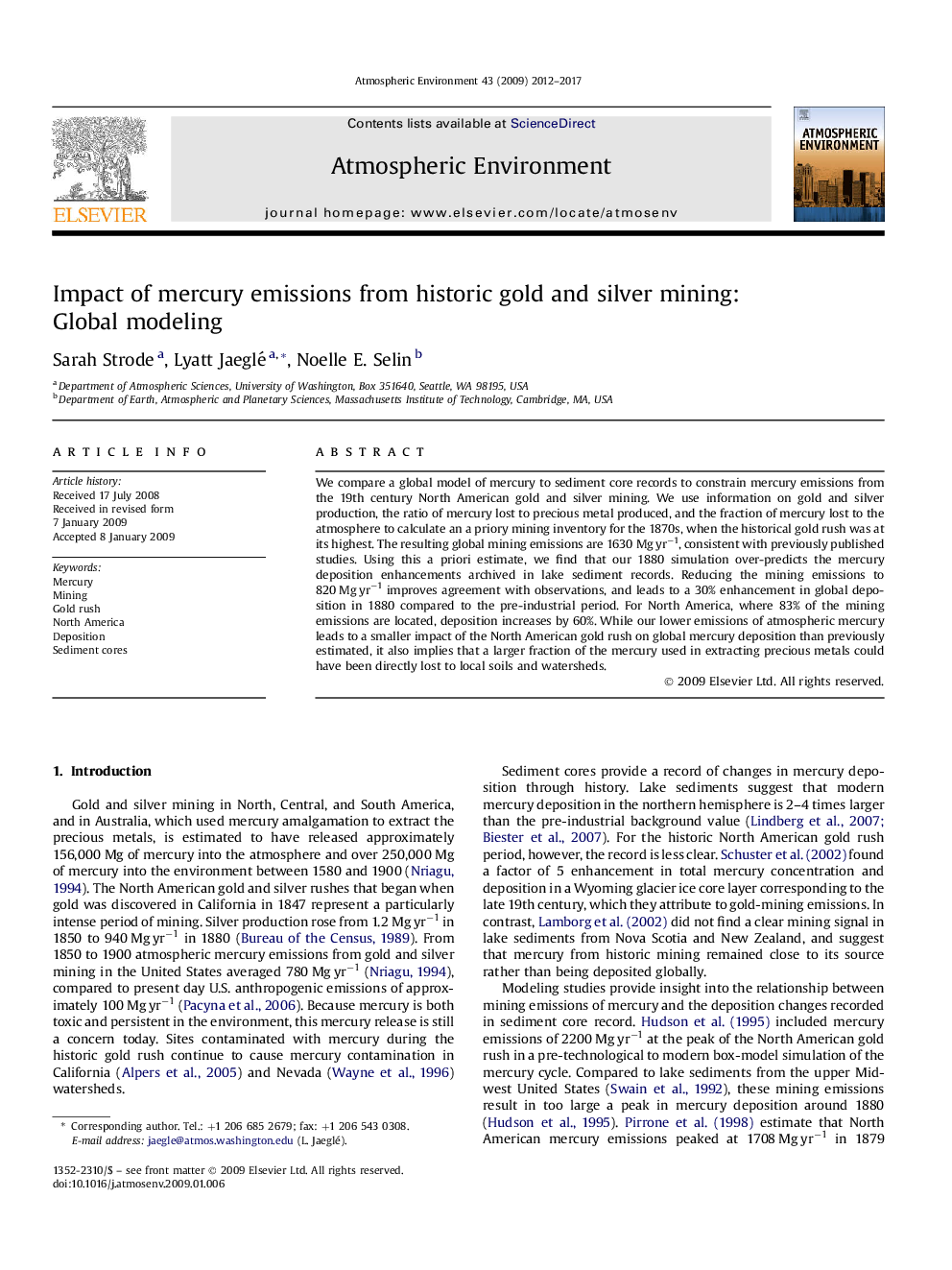| Article ID | Journal | Published Year | Pages | File Type |
|---|---|---|---|---|
| 4441641 | Atmospheric Environment | 2017 | 6 Pages |
We compare a global model of mercury to sediment core records to constrain mercury emissions from the 19th century North American gold and silver mining. We use information on gold and silver production, the ratio of mercury lost to precious metal produced, and the fraction of mercury lost to the atmosphere to calculate an a priory mining inventory for the 1870s, when the historical gold rush was at its highest. The resulting global mining emissions are 1630 Mg yr−1, consistent with previously published studies. Using this a priori estimate, we find that our 1880 simulation over-predicts the mercury deposition enhancements archived in lake sediment records. Reducing the mining emissions to 820 Mg yr−1 improves agreement with observations, and leads to a 30% enhancement in global deposition in 1880 compared to the pre-industrial period. For North America, where 83% of the mining emissions are located, deposition increases by 60%. While our lower emissions of atmospheric mercury leads to a smaller impact of the North American gold rush on global mercury deposition than previously estimated, it also implies that a larger fraction of the mercury used in extracting precious metals could have been directly lost to local soils and watersheds.
